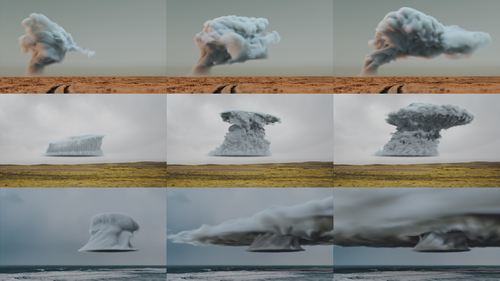Pre-recorded Sessions: From 4 December 2020 | Live Sessions: 10 – 13 December 2020
4 – 13 December 2020
Pre-recorded Sessions: From 4 December 2020 | Live Sessions: 10 – 13 December 2020
4 – 13 December 2020
#SIGGRAPHAsia | #SIGGRAPHAsia2020
#SIGGRAPHAsia | #SIGGRAPHAsia2020











Date/Time:
04 – 13 December 2020
All presentations are available in the virtual platform on-demand.
Lecturer(s):
Torsten Hädrich, KAUST, Saudi Arabia
Miłosz Makowski, UAM, Poland
Wojtek Pałubicki, UAM, Poland
Daniel T. Banuti, UNM, United States of America
Sören Pirk, Google AI, United States of America
Dominik L. Michels, KAUST, Saudi Arabia
Bio:
Description: The complex interplay of a number of physical and meteorological phenomena makes simulating clouds a challenging and open research problem. We explore a physically accurate model for simulating clouds and the dynamics of their transitions. We propose first-principle formulations for computing buoyancy and air pressure that allow us to simulate the variations of atmospheric density and varying temperature gradients. Our simulation allows us to model various cloud types, such as cumulus, stratus, and stratoscumulus, and their realistic formations caused by changes in the atmosphere. Moreover, we are able to simulate large-scale cloud super cells – clusters of cumulonimbus formations – that are commonly present during thunderstorms. To enable the efficient exploration of these stormscapes, we propose a lightweight set of high-level parameters that allow us to intuitively explore cloud formations and dynamics. Our method allows us to simulate cloud formations of up to about 20km × 20km extents at interactive rates. We explore the capabilities of physically accurate and yet interactive cloud simulations by showing numerous examples and by coupling our model with atmosphere measurements of real-time weather services to simulate cloud formations in the now. Finally, we quantitatively assess our model with cloud fraction profiles, a common measure for comparing cloud types.
